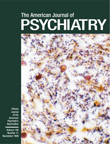Until recently, sensitivity to sex differences was largely ignored in therapy. Freud’s feminine psychology, which he admitted was the weakest part of his theory, was largely based on male development. Historically, most medical research has been done on men and the results applied to women.
There was opposition within the psychoanalytic movement against Freud’s theory of female development by Sandor Ferenczi, Melanie Klein, Karen Horney, and Clara Thompson, who stressed biological and cultural factors. With the advent of the feminist revolution after World War II and the proliferation of literature on women, feminine gender issues came to the forefront. Betty Friedan (1), the founder of the feminist movement in the United States, challenged not only the feminine mystique but also the masculine mystique, both of which are shaped by the culture.
Observational studies of human and animal infant development demonstrated that there are indeed differences between the sexes, but the differences are opposite from what Freud had theorized. Female development is not more complicated, as stated in classical psychoanalytic theory, but more direct than male development. The importance of biological and cultural factors also proved to be paramount in female development. Furthermore, as the Kleinian, object relations, and neo-Freudian analysts emphasized, the mother and the preoedipal period was found to be of primary significance during child development, not the father and the oedipal period, as Freud stressed. Classical psychoanalysis has accepted these new multidetermined factors.
The authors gathered by the editors of this book base their therapeutic work with men on the newer findings that historical, cultural, and economic forces strongly influence the parenting of boys during childhood. Boys are expected to be independent, aggressive, and not to show emotionality, except for anger. To establish male gender identity in our culture, the preoedipal boy needs to separate prematurely from his mother. The father is usually not emotionally available to catch the boy when he jumps out of the nest with mother. Thus, there is a premature disruption of the early holding environment that is experienced as a traumatic abandonment and is repressed, which results in adult symptomatic behavior and character defenses. There is an accompanying unconscious sense of shame over dependency feelings, which are considered babyish or feminine, resulting in difficulty admitting vulnerability. Thus, many men are resistant to seeking therapy, which is seen as a “weakness.”
Although the authors do not make reference to neuroscience, many of the findings they describe can be understood biologically. Because separation of the preoedipal male child from his mother is premature and threatens survival, this experience is probably directly encoded in the amygdala of the brain, as LeDoux (2) and other neurobiologists have noted. This does not involve repression, but when this trauma is activated in the amygdala, it is unconsciously expressed through behavior.
Female children do not have to separate prematurely and can differentiate from their mothers gradually. Thus, girls do not experience this trauma of abandonment. In addition to differences in the female brain, Silverman (3) noted that female babies are calmer and that mothers relate to them more verbally. This would help to internalize the mother in the neocortex. It might explain why women express depression more verbally, while men often show undiagnosed depression through behavior, such as alcoholism, drug abuse, violence, suicide, antisocial behavior, and poor school performance.
The authors have previously published many excellent papers and other books on men. Pollack is Codirector of the Center for Men and Director of Continuing Education (Psychology) at McLean Hospital, Assistant Clinical Professor of Psychology in the Department of Psychiatry at Harvard Medical School, and a candidate at the Boston Psychoanalytic Institute. Dr. Levant is Dean and Professor of Psychology at Nova Southeastern University and founder and former Director of the Boston University Fatherhood Project. Both have been leaders in the Society for the Psychological Study of Men and Masculinity, a division of the American Psychological Association.
New Psychotherapy for Men contains a comprehensive overview of the therapy of men and the theory behind it. The introduction gives a review of the social code of masculinity, which influences male character development and takes a toll on men’s longevity. Six factors that interfere with men seeking help are listed: difficulty admitting a problem, difficulty asking for help, normative male alexithymia or difficulty in emotional intelligence, fear of intimacy, sexualization of relations with female therapists and homophobic barriers to male therapists, and lack of treatment that is empathic to men’s needs. Part 1 includes chapters on psychoanalytic, psychoeducation, cognitive, group, couple, and family therapies. Part 2 includes chapters on treating depression, shame, gender role stress and erectile disorder, and empathic disconnection in violent men. Part 3 covers treating anger in African American men, treating gay and bisexual men, and when women treat men.
The book flows extremely well despite the number of contributing authors. Each chapter not only discusses a clinical approach but also provides an interesting actual case example to demonstrate its therapeutic application. Pollack recommends an empathic holding environment, which many men lacked during childhood. Initially, interpretations need to be held back and denial of feelings not challenged. Safety and continuity are important; the therapist needs to be available, nonjudgmental, and responsive. New Psychotherapy for Men is highly recommended and an important resource to all therapists in understanding male problems and working successfully with them therapeutically.

